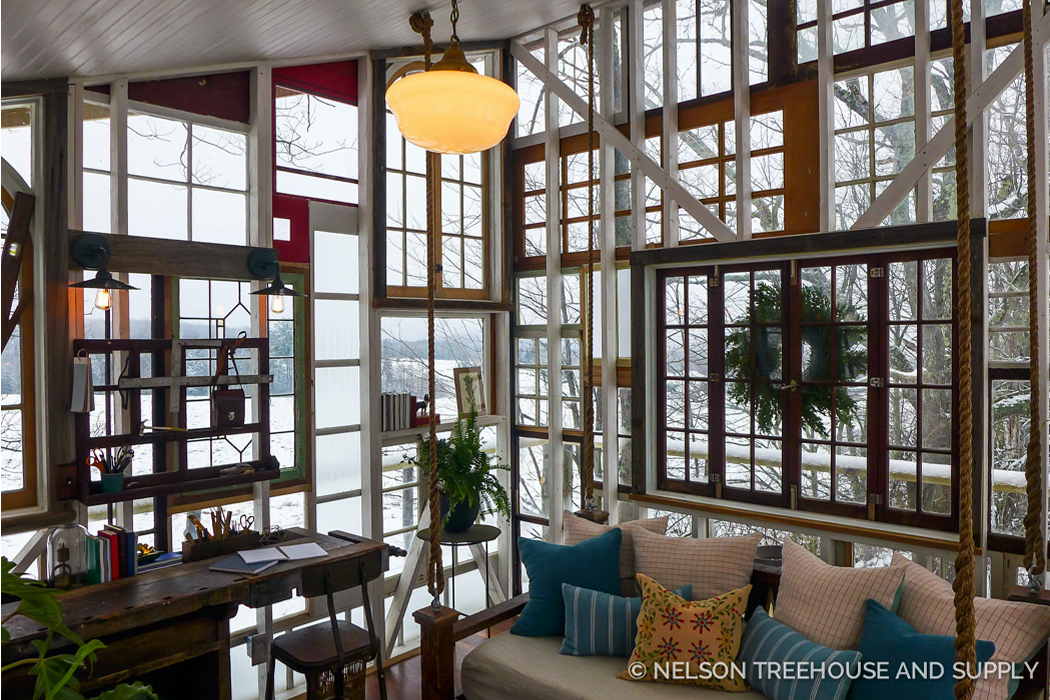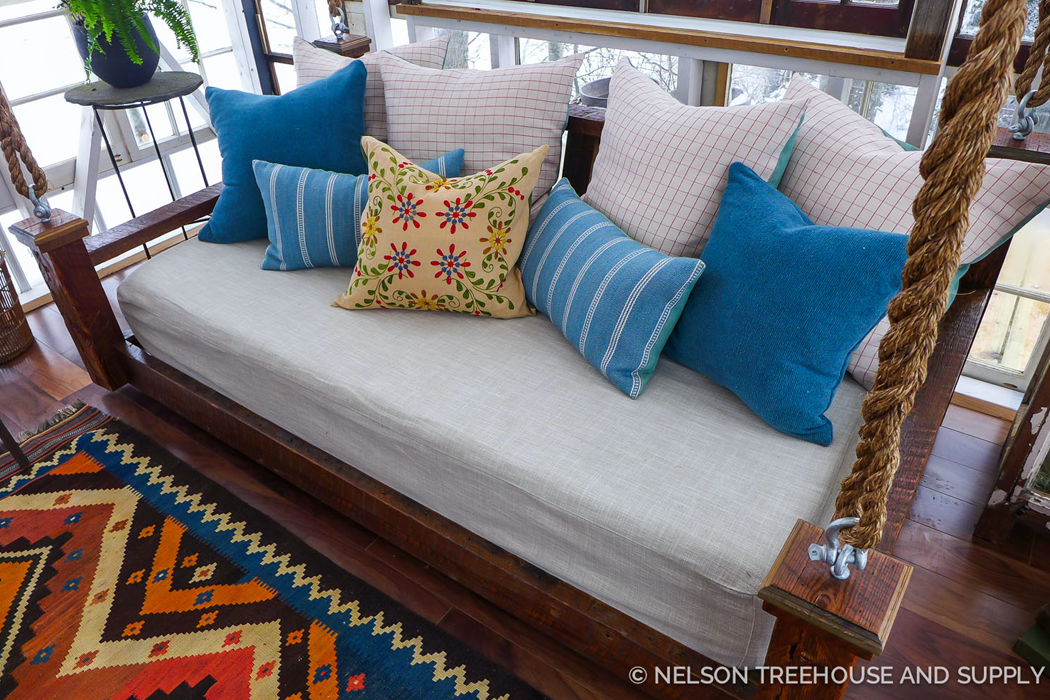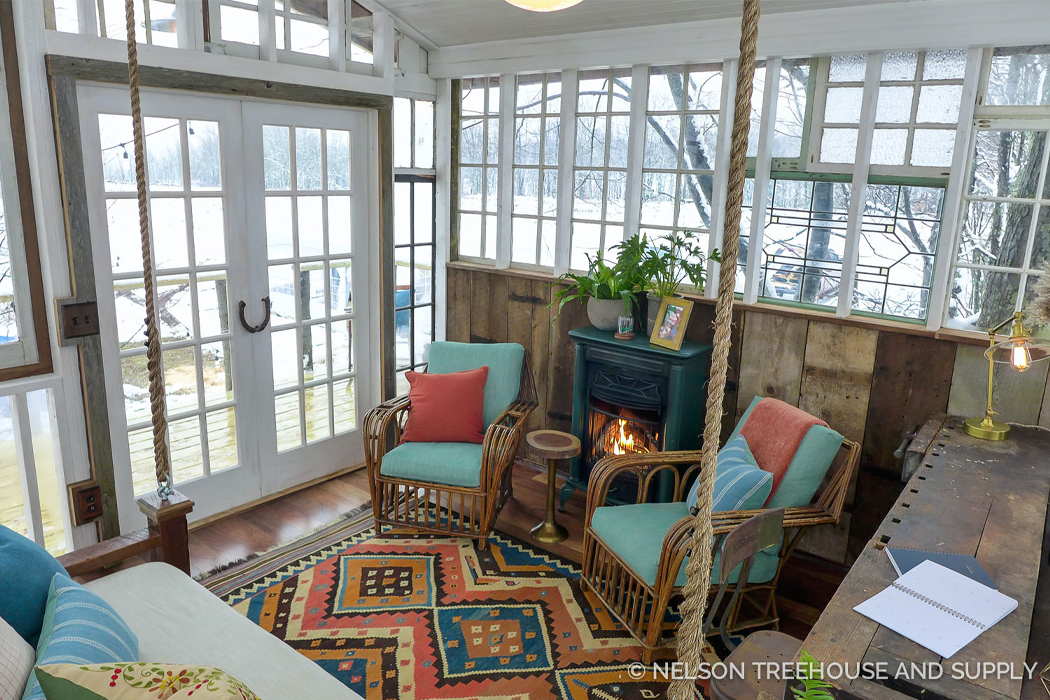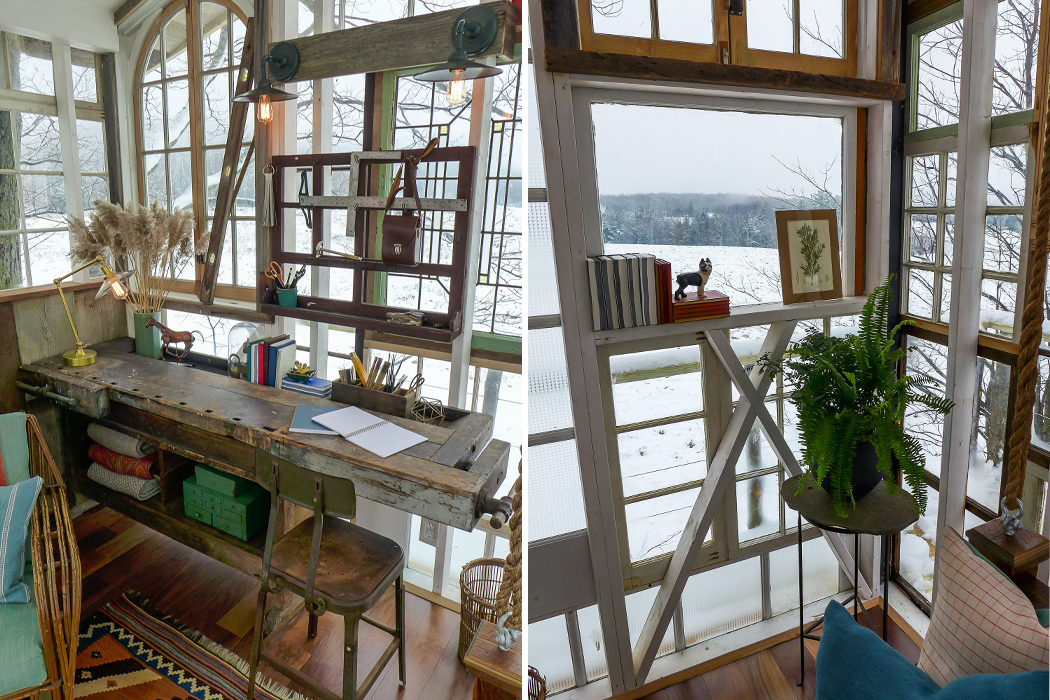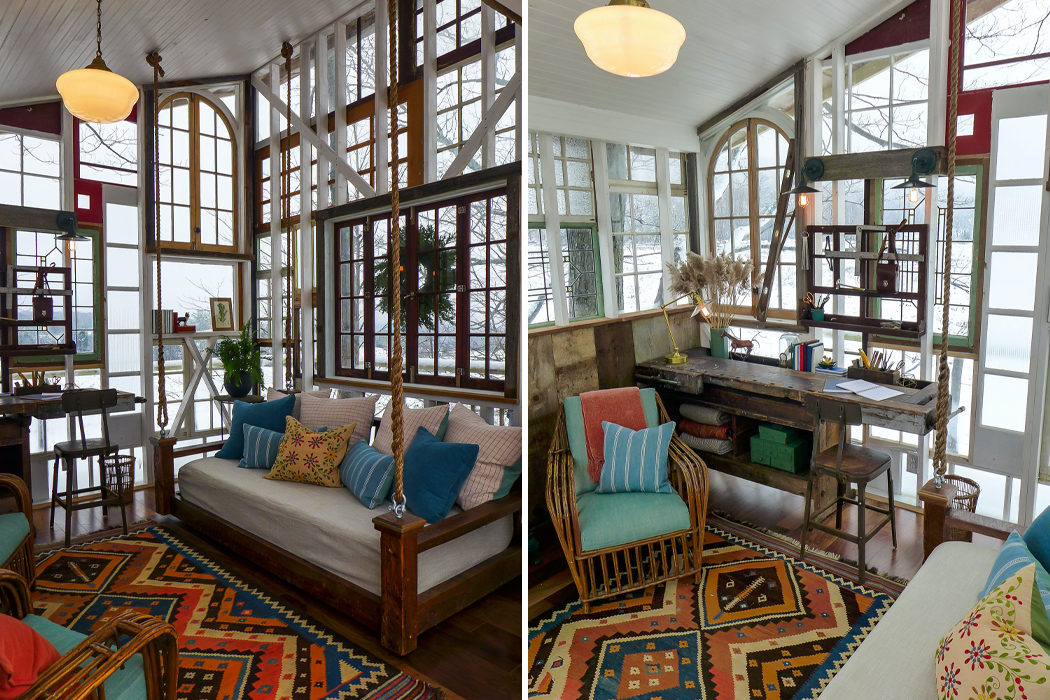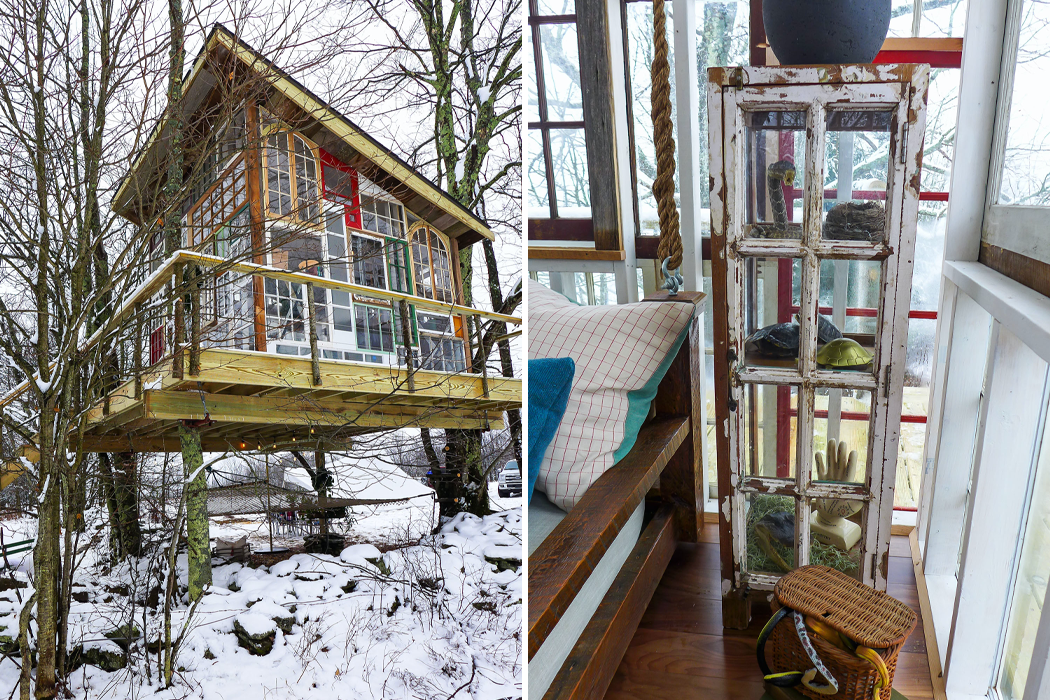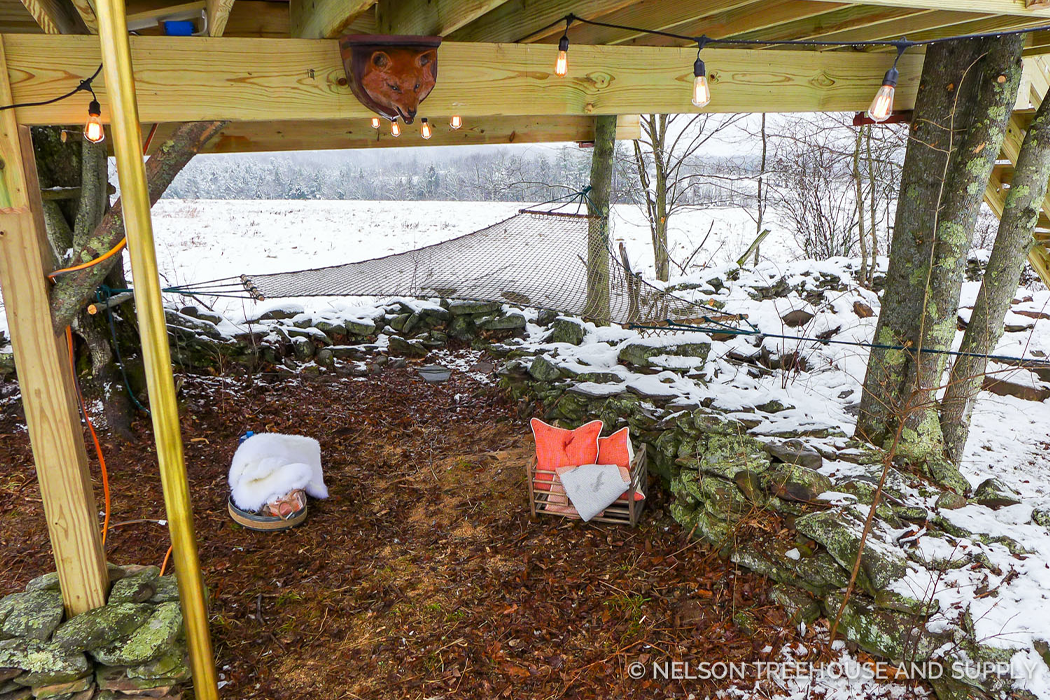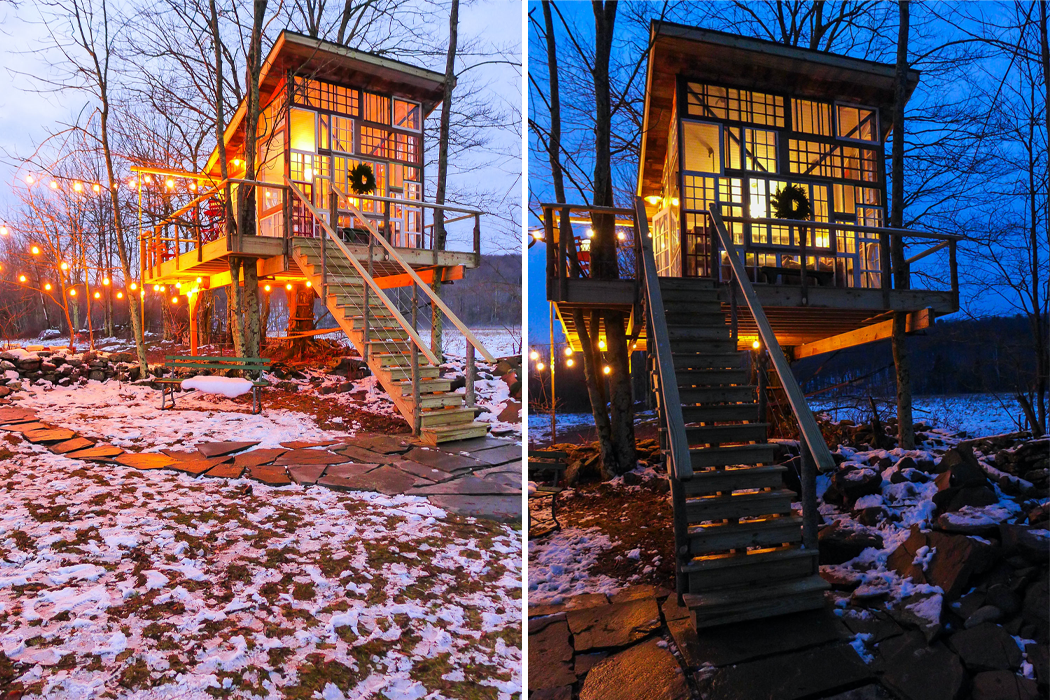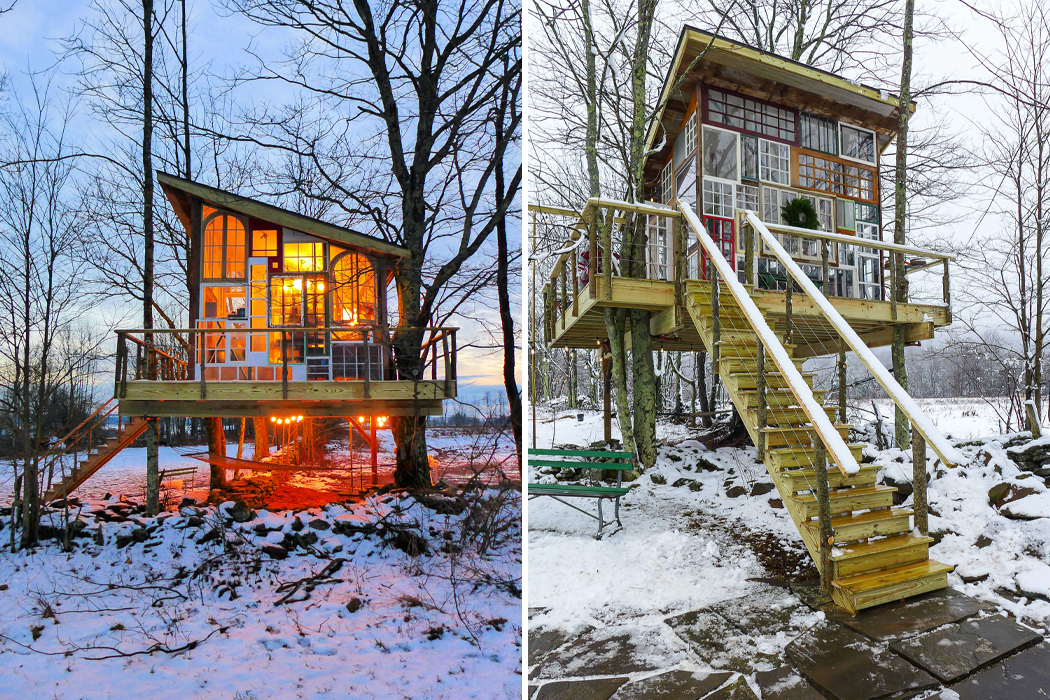
When designing interior spaces, we might prioritize personal taste, over feeling. For example, the minimalist appeal of a cushionless, stiff chair could beat out the more comfortable chair due to its homelier appearance. Treehouses, however, have a way of bringing us back to childhood, allowing us to give in to our most unabashed and individual design preferences. The Glasshouse, built by Nelson Treehouse and Supply, was designed by Christina Salway, and whatever rules that might have been previously set in place for treehouse creation were thankfully thrown out the window.
Designers: Christina Salway x Nelson Treehouse and Supply

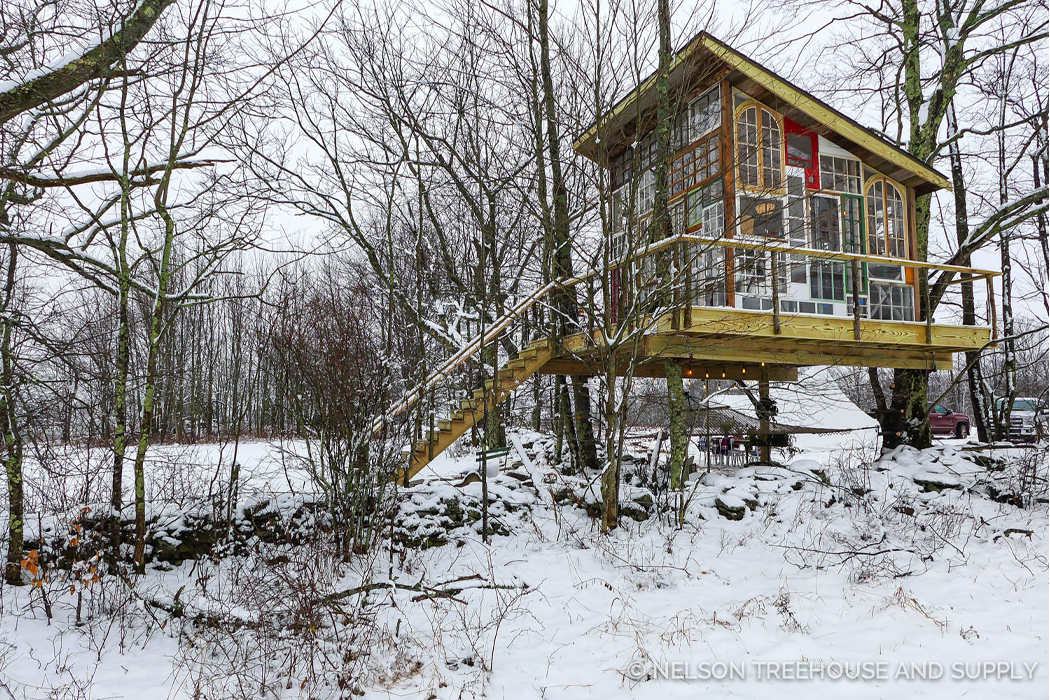
Christina Salway acquired the items used to decorate the inside of The Glasshouse from Craigslist ads, street corners, vintage shops, or old gifts. The environmentally conscious decision to construct the treehouse’s walls entirely out of salvaged and gifted window panes provided the treehouse with sweeping, panoramic views of Upstate New York’s ever-changing landscape. A hanging Carolina daybed suspends from Glasshouse’s ceiling in order to bring out the inherent playfulness that comes with treehouses, while also maintaining a sense of draped elegance. Further, Salway hoped to create a visual representation of all that and who she loves, from the dreamy, centuries-old swirls that fill up blown glass window panes to the handmade glass cabinet filled with amphibian and reptile paraphernalia.
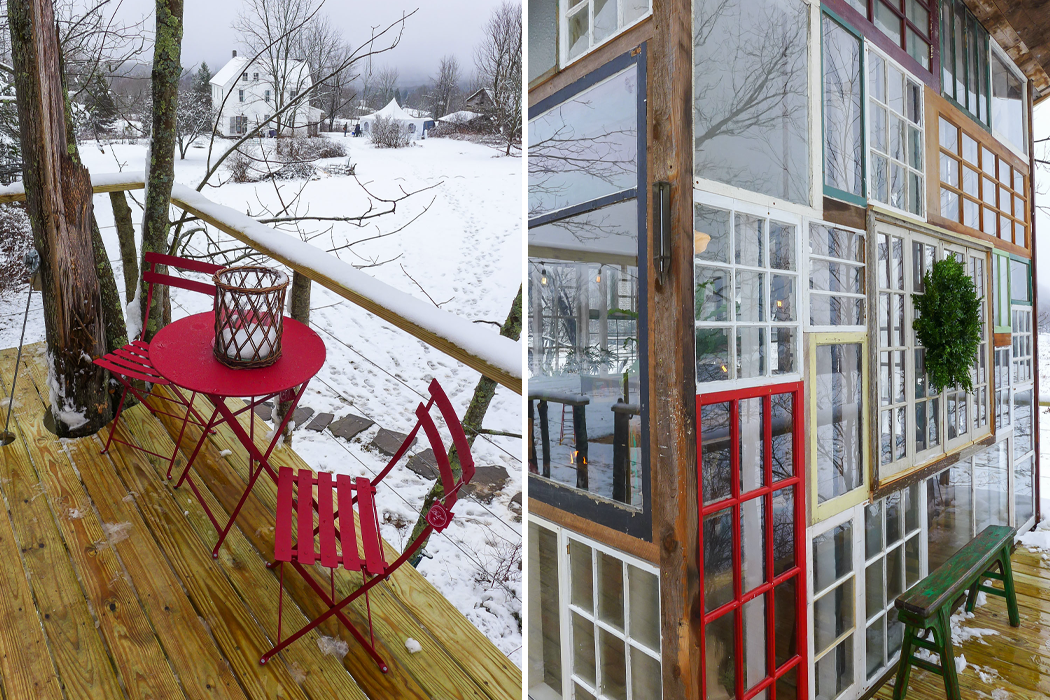
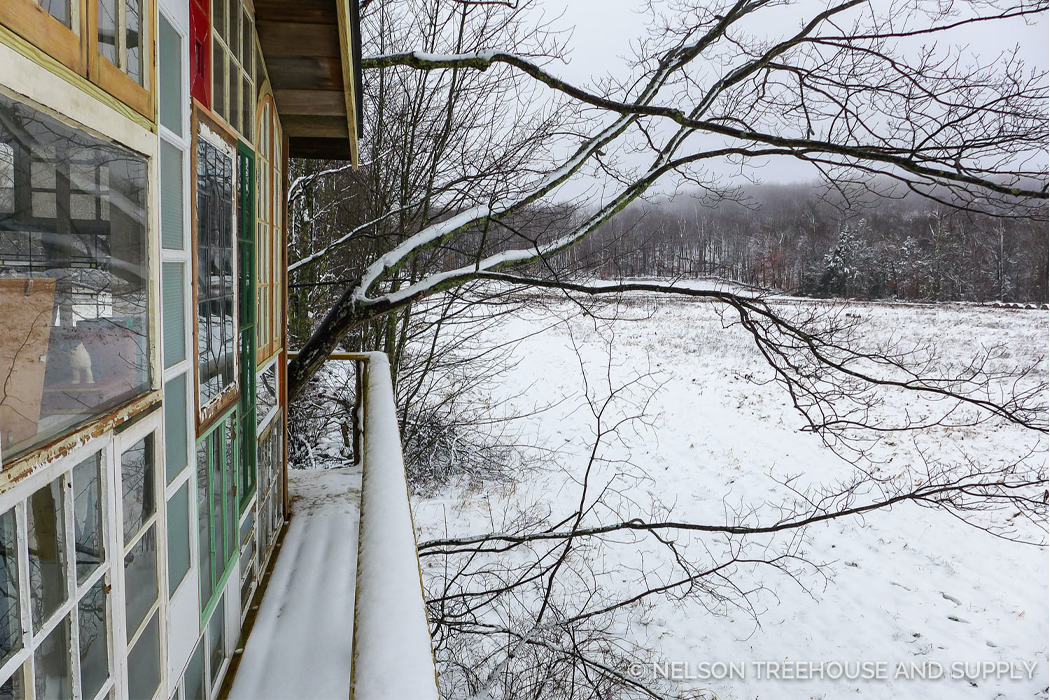
With the subtle inclusion of natural, unfinished wood beams and flooring, nature is as much of a force inside the transparent walls of Glasshouse as it is outside. Unobstructed views of snowy hills and wooded mountains entirely fill up the inside of Glasshouse, and atop its outdoor, wooden deck, both morning coffee and closer panoramic views await. Remaining inside to soak in the views, Salway was sure to include every comfortable corner we’ve come to expect from a larger home: a spot for reading or writing, a living area for socializing, a daybed for rest, and even a tiny, yet toasty fireplace. In addition to the straight, wooden staircase supported by tree branches on both of its sides, Salway installed a McIntire Brass Slide Pole in order to reach the ground below. Just beneath Glasshouse, a hammock bed stretches and securely latches onto Glasshouse’s wooden support beams, so that families of up to five can snuggle up and enjoy the sights and sounds of Upstate New York.
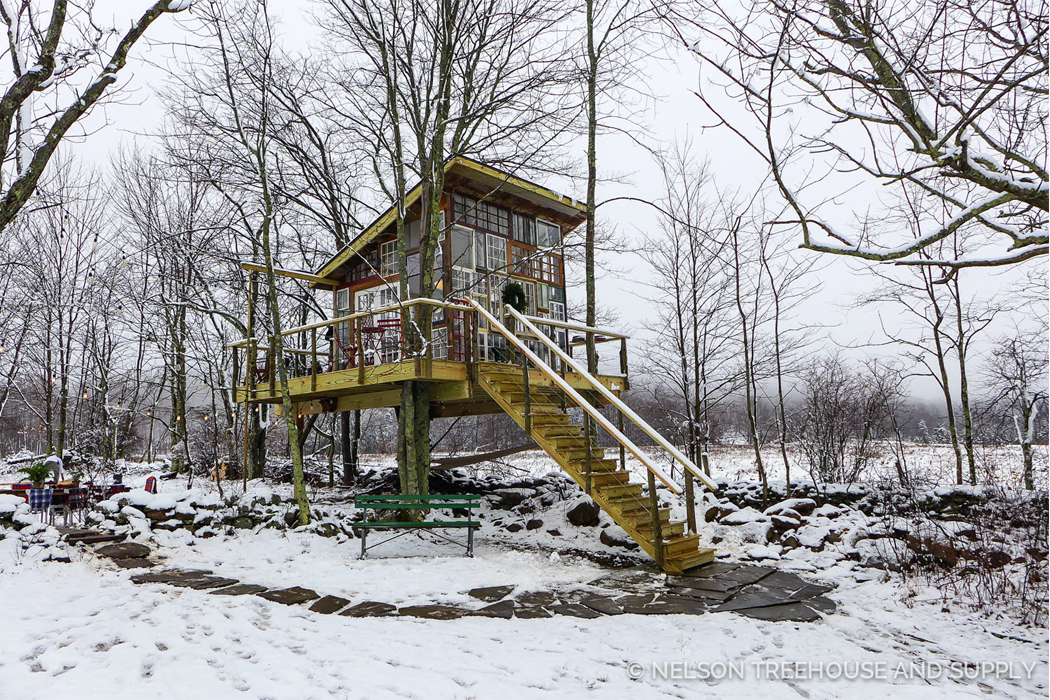
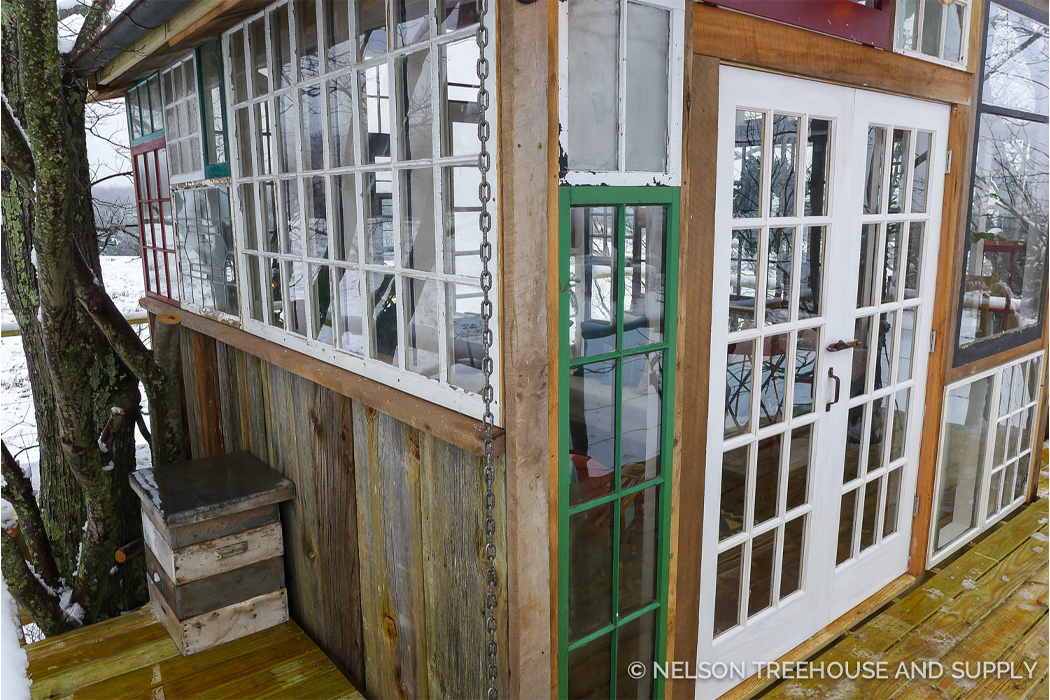
In regard to the distinct coziness that emanates through The Glasshouse, Salway seems to share the belief that living spaces should work as a sort of collection of items from past and present. This treehouse stands distinctly in its own light, existing somewhere outside the possibility of replication. Additionally, Glasshouse proves the practicality and feasibility that can be achieved by taking an entirely artful and sentimental approach towards design, even if the rules are broken along the way.
